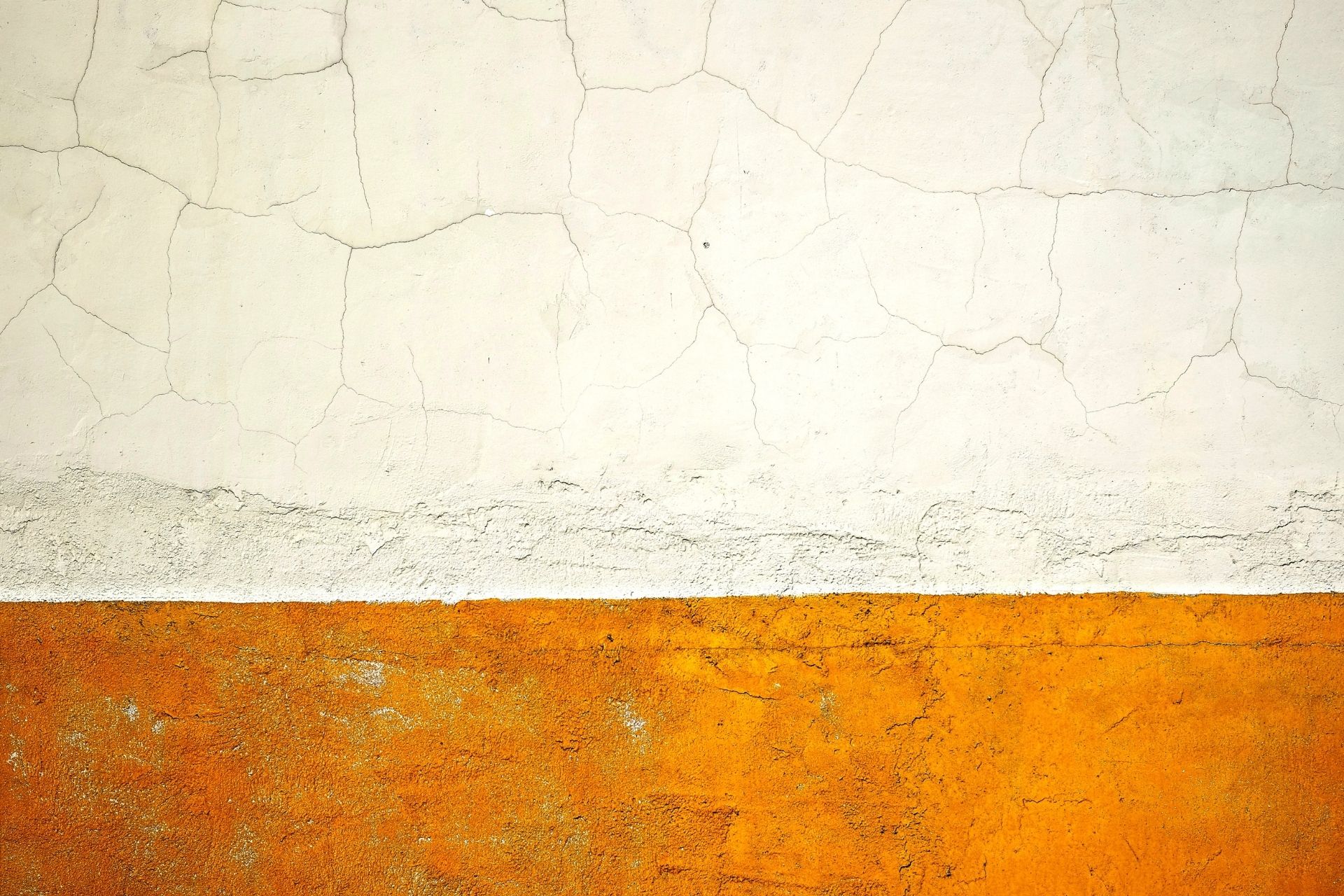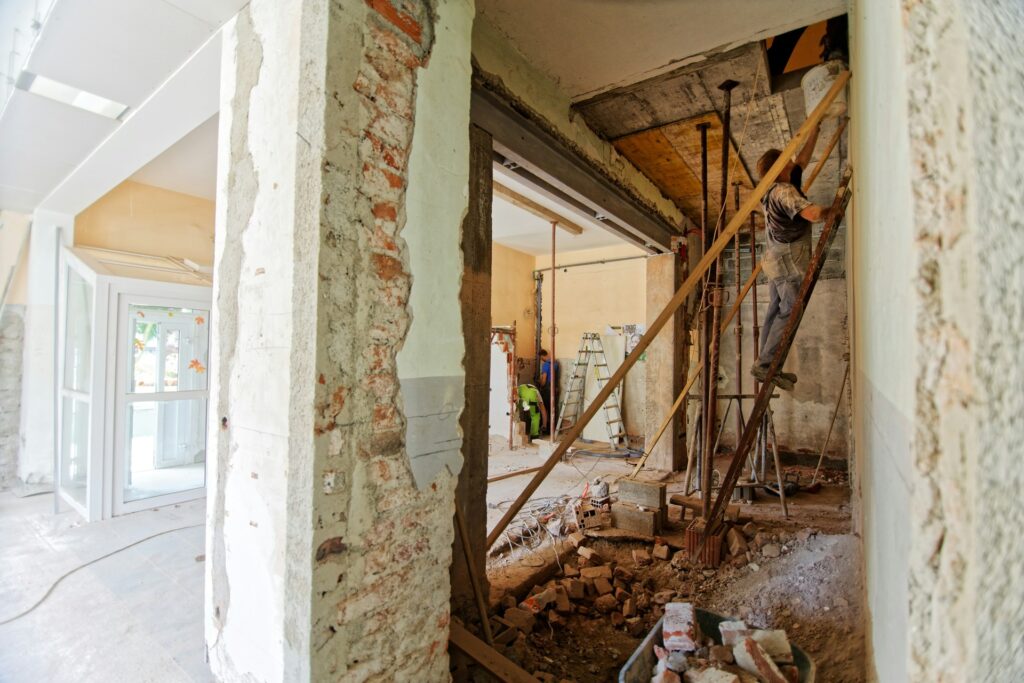
We are reader-supported. When you buy through links on our site, we may earn an affiliate commission.
Over time your walls can receive wear and tear from everyday use. If you have plaster walls, you may begin to see cracks. If not repaired right away, they can lead to long-term issues. So, here is how to successfully patch plaster walls.
1. Prepare Your Space
Before you even start, make sure you protect your space. Cover your floor with drop cloths and fasten them using painter tape. This will prevent spilled plaster or joint compound from staining your floors. It will also make the cleaning process much easier. Then enclose the room using plastic sheeting and painter tape. Consider using a polycarbonate sheet since they are extremely durable.
Also, excess moisture on your wall can impact the plastering process, so make sure to fix any leaks ahead of time.
2. Wear Safety Gear
Along with getting your space ready, make sure to wear proper safety gear. This may not be the step you often think about when determining how to patch plaster walls. However, it’s an important one. So wear safety glasses, a long-sleeved shirt, and work gloves for better protection. To protect against breathing in unsafe air, consider wearing a sanding respirator.
You may also want to invest in some hearing protection, such as earplugs. When chipping off the plaster with a hammer, the sound could become distracting. Also, if you are on your knees for an extended period, consider finding some old knee pads or laying down a shirt. Having the right footwear is essential. Consider wearing old sneakers or construction boots to protect against fallen nails.
3. Remove the Damaged Plaster
First, you want to remove the affected plaster using a chisel and hammer to chip it off the wall. Make sure you are chipping lightly to prevent lath damage. The lath is the wooden structure supporting the plaster. Then use a utility knife to smooth the inside edges of the hole.
Before starting, ensure you have turned off the power to your electrical circuits. Also, to prevent cracks from spreading, cut the plaster where you want the demolition to stop. When disposing of the plaster, fill a heavy-duty garage bag or bucket since the pieces can be heavy.
4. Apply the Latex Bonding Agent
To ensure the dry plaster doesn’t absorb excess moisture, apply the latex bonding agent to the lath and plaster. An acrylic latex bonding agent helps hold together the fresh concrete and the old layer. It usually is a milky white color. Consult a professional before buying supplies for repairing your wall.
5. Apply and Cross-Scratch Plaster
After you apply the bonding agent, fill the hole with plaster using a wallboard knife. To ensure the second coat sticks well, cross scratch the first one as it starts to set. The scratching forms shallow curves in the first coat. This helps create a secure bond when applying the second coat. A strong bond is important to keep your foundation strong and prevents future cracks.
6. Add the Second Layer
Let the first coat dry for a day and then use a spray bottle to dampen the area. Apply a thick coating of plaster over the hole and cross scratch. Then let the layer dry for an additional day. The second covering can help strengthen the wall and reduce moisture leaks. Also, it can seal up the border to prevent unwanted drafts. Plus, two coats can provide a nicer-looking finish.
7. Apply a Coating of Joint Compound
Once the second layer is dry, add the joint compound using a wallboard knife. Then feather around the affected area, so it blends with the rest of your wall. Feathering means gradually thinning the edges of the coating.
To do this, take the same brush, without adding any more paint, and drag it out and over the existing wall paint. Without employing this technique, the thickness of the layers may stand out.
When choosing a joint compound, you have multiple options, such as:
- All-Purpose Compound: This is premixed mud that you can purchase in buckets or boxes. Its lightweight material and has a slow dry time making it easy to use.
- Topping Compound: This compound is best to use after you apply the first two coats. It provides a strong bond and goes on smoothly. It’s usually sold in a dry powder form and mixed with water.
- Taping Compound: It’s best to use for the first part of finishing drywall joints. It’s also suitable for covering plaster holes when you need strong bonding. Although, this type dries harder and isn’t as easy to sand as other kinds.
- Quick-Setting Compound: This is perfect to utilize when you need to finish a job quickly or apply multiple coatings in one day. It’s also suitable for filling deep holes in plaster. If you’re working in a high-humidity area, then this compound will set well.
Once the first layer is dry, sand until smooth with fine-grit sandpaper, and apply a second thinner coating of the joint compound. Same as before, feather it out for a more aesthetically pleasing finish.
8. Sand the Area
When deciding how to patch plaster walls, this is one of the important stages of the process. With the compound dry, wipe the section with a damp sponge and use sandpaper to smooth it out. Try utilizing a piece of 120-grit sandpaper for better results. The higher the grit, the more fine the material is in terms of roughness. Finer grits are usually good for finishing work.
When sanding, consider buying a drywall sander to make the process more efficient. Also, try to apply light pressure along the edges to protect the rest of your wall. During this process, dust may travel through the air, so make sure you’re wearing your safety gear. Also, while sanding, if you come across any gouges instead of sanding, add an extra layer of joint compound.
9. Prime and Paint
After sanding, you can add the primer and repaint. The primer is important to provide a stable base and help the paint stick to the surface better. It can also prevent liquid from leaking into multiple layers. If there are any stains, the primer can even help conceal these. Try to find an oil-based stain-blocking primer. These are more reliable for preventing water-based stains and odors.
Then it’s time to paint the repaired wall. Consider using acrylic latex paint.
Here are some general steps to follow for painting your plaster walls:
- Clean the primer for your paintbrush.
- Refill your paint pail.
- Use an angled paint brush along the perimeter of your walls, creating a smooth line.
- Dab the paint into the crevices.
- Load the roller with paint.
- Add a coat of paint to the rest of the walls.
- Let it dry and apply a second coat.
10. Prevent Cracks in the Future
Now that you know how to patch plaster walls, here are some tips for keeping your walls protected down the road. When plastering, you want to make sure it doesn’t try too quickly, which can cause shrinkage and cracks. Consider starting the project in the morning when the air is less humid.
Also, make sure the coating contains Polyvinyl acetate (PVA) so your brickwork doesn’t absorb the water. Also, it is important to use the right materials for your walls. You want to use sand with fine materials or add fibers into the mixture.
Keep in mind cracks can form because of structural issues or shifting over time. So, have a professional check your home’s foundation at least once a year.
Tips on How to Efficiently Plaster Walls
Because of everyday wear and tear or unexpected leaks, your walls can form cracks or gaps. When this happens, you will want to know how to patch plaster walls. Follow these steps to patch your walls like a pro.










